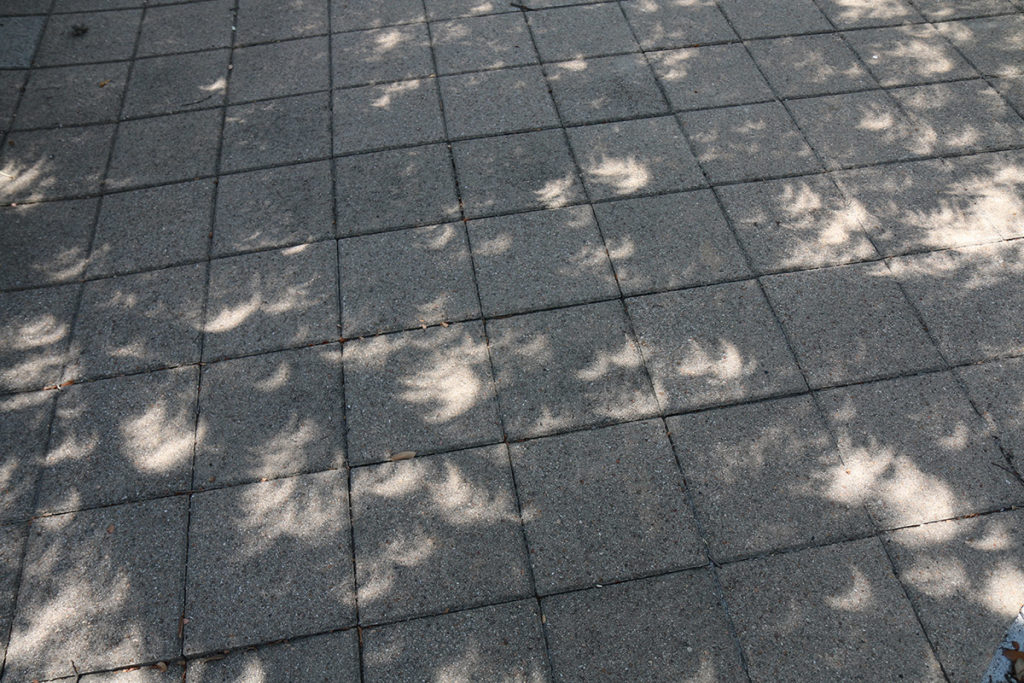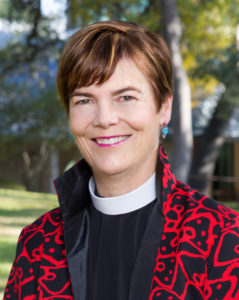Early in the morning of Monday, August 21st, I could have been getting out of a sleeping bag in Grand Teton National park primed to witness a rare total eclipse of the sun. Instead I was fortunate enough to gather for the first Monday Eucharist and assembly at the opening of the 2017-18 academic year. It was familiar for the many who have done it before—the middlers returning from CPE, the seniors returning as seniors, the first year students after New Student Orientation, the reformation of voices and bodies into one worshiping body for the year.
A few weeks earlier, at the salon where I get my hair done, Stefan had asked me, “Are lots of people asking you to pray for them as the solar eclipse gets closer?”
“No,” I replied.
He answered, “I guess they just ask their hairdressers.”
Ann Coulter, the conservative columnist, reflected that the eclipse could be God’s judgment on America, a sign of divine disfavor. The proper response—she said—was to repent.
What would we do? What should we do?
Here in Austin, the eclipse was expected to begin at 11:41, just before 11:45 chapel. So for those of us on the SSW campus, the answer was easy: We should go to chapel!
If we Episcopalians believed that Jesus would come again tomorrow and that the world as we know it would end, what scripture would we choose to read and preach?
We would read and preach the assigned lectionary readings for the day.
The alternation of day and night is the most reliable pattern we know. It’s grown into our bones, into our breath, and liturgized into Morning and Evening Prayer. It is a pattern built into creation.
“And there was evening and there was morning, the first day.”
“God made the two great lights—the greater light to rule the day and the lesser light to rule the night.”
My favorite version of this is Ethel Merman’s:
“I’ve got the sun in the morning and the moon in the evening, and I’m all right.”
On the very rare occasions when ancient peoples experienced an eclipse of the moon or of the sun, it was seared into their corporate memory and became a motif in their mythology and literature:
“The sun will be darkened and the moon will not give its light, and the stars will be falling from heaven and the powers in the heaven will be shaken.”
They knew it as an intervention in the divine order. It happened abruptly; there was no internet to say it is coming and where to order protective glasses and directions about how to make a pinhole viewer from a cereal box.
It was not the predicted, scripted, anticipated, and marketed event of today, but sudden and total—just as Annie Dillard describes it in her essay “Total Eclipse” (1982):
The second before the sun went out we saw a wall of dark shadow come speeding at us. We no sooner saw it than it was upon us, like thunder. It roared up the valley. It slammed our hill and knocked us out. It was the monstrous swift shadow cone of the moon…. We saw the wall of shadow coming, and screamed before it hit. [1]
“When it was noon, darkness came over the whole land until three in the afternoon.” [2]
For us post-modern people, the total eclipse of the sun on the first Monday of the academic years evokes wonder—it rekindles our capacity for awe in a demythologized universe. I recall the very first book in my first religion class, Rudolf Otto’s The Idea of the Holy: “Mysterium tremendum et fascinans.”
It brings before us the complexity of creation, even more infinite and varied than ancient mythology knew. It expresses the vastness of time dwarfing our human lifespans, displacing us, even for two hours, from the center of everything.
“What is man, that thou art mindful of him? and the son of man, that thou visitest him?”[3]
As we were planning the service that would occur during the solar eclipse, Professor Nathan Jennings pointed out that “Every Eucharist celebrates creation.”
When the alternation of night and day is disrupted, even for two hours, and night overcomes the day, that sacred rhythm of day and night, that holy pattern of evening and morning comes into view as the daily miracle it is. The pattern is reflected in Morning and Evening prayer. Senior Reagan Gonzalez, in her homily to the new students during new student orientation last week at Mo Ranch, named it the “salvific monotony” of our worship. We are sent back to return to our life of commandment keeping.
The coincidence of the total eclipse with the beginning of the school year was an auspicious and dramatic beginning for what is already dramatic enough.
So to observe this celestial event, I did what I do every Monday—celebrated the Eucharist and convened assembly—then got lunch and went outside with the people with whom I carry my cross. I felt the darkness cover the land and the light return. I prayed for everyone the hairdressers aren’t covering. I gave thanks for the sun in the morning and the moon in the evening, and I got back to what keeps us in life: keeping those commandments.
Thanks be to God.
[1] (Teaching a Stone to Talk, 100)
[2] Mark 15:33
[3] Psalm 8 KJV



